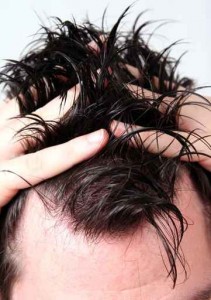
Androgenetic alopecia is the most common type of hair loss both in men and women in all over the world. It is also called androgenic alopecia, androgenic hair loss, male pattern baldness, male pattern hair loss or male baldness.
Androgenetic hair loss has been affecting human race throughout the history as we deduce from the oldest historical records. Moreover, evolutionary evidences suggest that the history of androgenetic alopecia (male pattern baldness) is longer than the history of human race. Because, the closest non-human primate relatives, namely orangutans and gorillas, can also experience this kind of hair loss, in other words, develop androgenetic alopecia.
Today, with the help of greater knowledge on genetics and on the chemistry of male hormones, we know very well that pathological basis of androgenetic alopecia is formed by the effects of male hormones testosterone and dihydrotestosterone – on genetically susceptible individuals.
Although it is called as “male pattern hair loss” or “male baldness”, androgenetic alopecia can also affect women and androgenetic alopecia is the most common form of hair loss in female patients (50% of female cases).
Today it is now possible to predict genetically the presence of androgenic alopecia before it actually starts.

